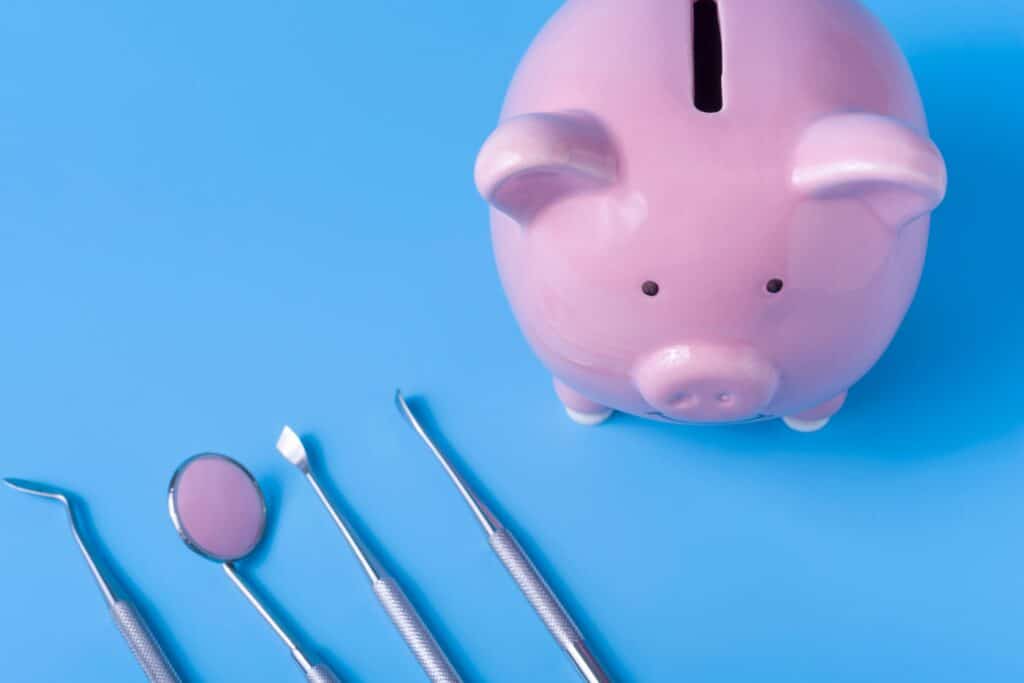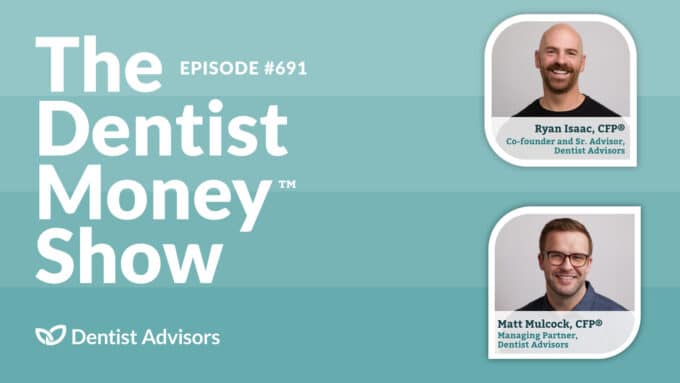Hey dentists! Did you know that you might be able to save thousands of dollars on your student loans?
The Biden-Harris administration recently released a new Income Driven Repayment (IDR) Plan called the SAVE Plan. I’ll cut to the chase – we’re big fans!
Before we dive into the details, let’s briefly touch on what IDR plans are and how they work. Your loan servicer uses your annual income and family size to decide how much they think you can afford to pay each month. This can be meaningful if a large amount of your income is going toward debt (i.e dental school loans). IDR plans can provide relief from your debt burden and provide the flexibility to fund other financial goals.
To determine your IDR plan payment, the lender will first calculate your “discretionary income”. This is your annual income minus a percentage of the Federal Poverty Level (FPL). The FPL is based on your family size and state of residence. That percentage will vary depending on which IDR plan you select. Basically, all this does is exclude part of your income to determine how much is discretionary.
Next, they take that “discretionary income” number and multiply it by either 5%, 10%, 15%, or 20% depending on your IDR plan. This will tell you how much you’ll pay that year. You would divide that annual amount by 12 to calculate your monthly repayment amount.
Let’s talk about the SAVE plan and why it’s different:
#1 The SAVE Plan will replace the REPAYE Plan
If you are currently enrolled in the REPAYE Plan you will be automatically switched over. No action needed on your end.
Previously with REPAYE, your discretionary income would be calculated based on 150% of the FPL (i.e. Annual Income – 150% of FPL). From there, they would multiply your discretionary income amount by 10% for both undergraduate and graduate student loans.
The SAVE Plan is the “upgraded” REPAYE Plan with new perks!
#2 More of your income will be sheltered
There were two key changes in the monthly repayment calculation: the threshold to determine your discretionary income and the percent of your discretionary income you pay annually.
With the SAVE plan, more of your income will be excluded from your monthly repayment calculation. Now the discretionary income threshold is 225% of the FPL instead of 150%. This results in a lower discretionary income amount.
REPAYE Calculation for family of 4
Annual Income $200,000 – (150% x $30,000) = $155,000 discretionary income
$155,000 * 10% = $15,500
$15,500 / 12 = ~$1,291 monthly student loan payment
SAVE Calculation
Annual Income $200,000 – (225% x $30,000) = $132,500 discretionary income
$132,500 * 10% = $13,250
13,250 / 12 = ~$1,104 monthly student loan payment
Additionally, undergraduate student loans will be 5% of your discretionary income instead of 10%. Graduate loans will remain at 10% of your discretionary income. If you have both, they will calculate a weighted average of your undergrad and grad loans.
SAVE Calculation
Annual Income $200,000 – (225% x $30,000) = $132,500 discretionary income
$132,500 * 5% = $6,625
$6,625 / 12 = ~$552 monthly student loan payment
If you were previously on the REPAYE Plan and your income has stayed the same, it is likely that you will see a lower monthly payment due in October.
#3 You can never owe more than you borrowed
Every loan payment has two parts: principal and interest. The principal is what you took out to pay tuition and the interest is the cost taking on that debt. In a standard repayment plan, your monthly payment would be a blend of the two. Early on, the monthly payment is mostly interest.
With the new SAVE Plan, the government has offered a way to make monthly payments lower than the standard repayment plan. For many borrowers, this means their SAVE Plan repayments may not actually cover the interest associated with their loan. Many dentists are in this situation so what does that mean? The government will cover any unpaid interest. It will not be added to your loan balance. Previously under the REPAYE Plan, the government would only cover 50% of unpaid interest.
Let’s say your standard 10-year repayment plan has a payment of $3,000 per month. Of that amount, $1,000 goes towards the principal and $2,000 goes towards interest. Assume under an IDR plan, your payment is around $500 per month. That payment would not cover the full cost of interest. What happens with the difference ($2,000 interest – $500 IDR payment = $1,500)?
Under SAVE, 100% of that is covered. Under REPAYE, the government would have only covered 50%.
#4 Automatic annual recertification
If you have been on an IDR Plan, you know how frustrating it can be to recertify your income every year. If you forget you, there could be steep consequences. Good news – you can elect to automatically recertify! With your permission, the Department of Education and your loan servicer will use your tax information annually to adjust your monthly payment.
Note – this feature will not be available until 2024 but you can enroll now.
#5 You can exclude your spouse’s income
The SAVE Plan allows for borrower’s to exclude their spouse’s income if they file their taxes separately. This could result in a much lower monthly payment. However, there are drawbacks with filing separately that could negatively impact other areas of your personal finances. If you are considering this, we recommend seeking guidance from a financial professional.
The SAVE Plan was the upgrade in IDR Plans that dentists really needed. It could mean huge savings and a boost towards your financial goals.
Here are some immediate action items:
- #1 Submit an application
If you are not already enrolled in the REPAYE Plan, consider applying on the Federal Student Aid’s website. If you don’t see the SAVE Plan as an option, you’ll select the REPAYE Plan. Again, you’ll be switched over to the SAVE Plan automatically. The Department of Education highly recommends applying this summer so you’ll be set for October when payments resume. - #2 Talk to a financial professional
Student loans are not something you want to gamble with, especially when you have high income and high debt. The risks are simply too high. Investing your time and resources to make a clear student debt paydown plan with the help of a financial professional will not only save you money but will help you feel confident about your money decisions. - #3 Stay tuned!
As we all know by now, the student loan environment is constantly changing. We have a student loan page that we will be constantly updating.
Do you have questions about your student loans? Email us at loans@dentistadvisors.com





